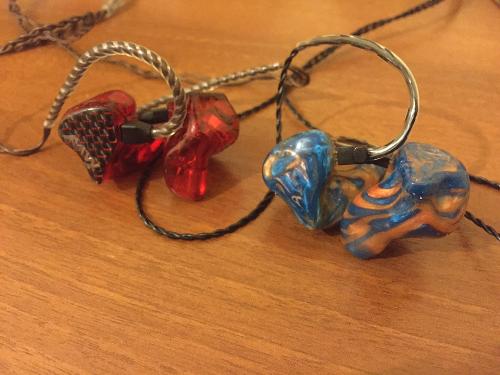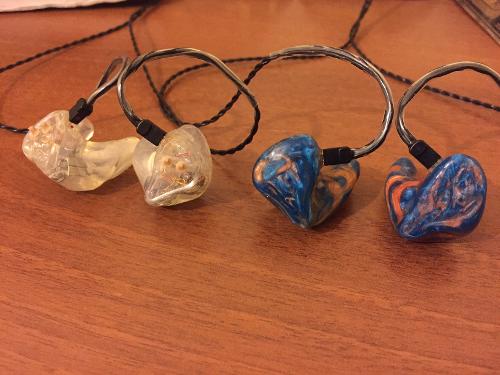Introduction:
The IFI is a co-brand of AMR Audio that is known by its famous audio gears such as DP-777. They produce many different audio components: digital audio converters, amplifications, speakers, cables, and active noise cancelation units. The IFI provides four main product lines: Nano, Micro, Retro and Pro. In the Nano Line, there are smaller units compared to the Micro Line. In the Pro Line, they offer Pro iCAN tube amplifier and there are stereo components in the Retro Line. IPurifier2, Gemini and Mercury cables that are included to this review can be seen in the accessories and power sections in the IFI website.
The IFI provides a large product range most of which are multi-functional with multiple outputs and inputs. It is highly possible to find beneficial and cheap solutions to close the gaps of the portable systems. As we all know, a system is no stronger than its weakest part.

IFI IEMatch:
IEMatch is one of the IFI’s newest units. According to the company, it removes hiss and provides a more dynamic presentation.
It offers a balanced plug that allows using it on sources that have balanced outputs. In addition, there is a switch on the plug for a range of output style from single ended to balanced.
On the male part of IEMatch, there is a 3.5 input and a sensitivity switch. When IEMatch is plugged to the source, earphones may need more driving power due tothe extra resistance created by IEMatch. On the ultra mode that is suitable for very high sensitive earphones, some smartphones may not reach enough loudness and driving power due to too increased ohm value. On the other hand, that wouldn't be problem for sources that are already very powerful such as desktop amps.

The plug and the male part of IEMatch have an aluminum body, but the switches might be a little stronger. According to the website, IFI utilizes silver-copper conductors for a better sound transmission.
In the package, there are a soft carrying case, an airplane adapter, and earplugs. In this regard, IFI offers rich accessories for those who frequently travel via airplane.

I tested IFI IEMatch on Chord Hugo, Lotoo Paw Gold, and IPhone 6. The tests maintain similar results; IEMatch relatively eliminates hiss arising out of the source with a slight change in the sound.
Some results from different custom monitors:
Please note that the differences are not significant.

Westone ES60: The space around instruments becomes cleaner by a small margin.
HUM Pristine: The midrange becomes a little laid-back.
Noble Audio Katana: The mid-bass now has more control.
AAW W500 AHMorph: The high frequency becomes smoother and sub-bass is slightly tighter. The space around instruments becomes cleaner.
Final Words:
IFI IEMatch is a nice travel accessory that can be purchased for $49. It is easy to use and can be considered as a daily unit. Although it increases the resistance by a significant value, it eliminates hiss considerably. Please check the IFI website for more information about IEMatch.
The IFI is a co-brand of AMR Audio that is known by its famous audio gears such as DP-777. They produce many different audio components: digital audio converters, amplifications, speakers, cables, and active noise cancelation units. The IFI provides four main product lines: Nano, Micro, Retro and Pro. In the Nano Line, there are smaller units compared to the Micro Line. In the Pro Line, they offer Pro iCAN tube amplifier and there are stereo components in the Retro Line. IPurifier2, Gemini and Mercury cables that are included to this review can be seen in the accessories and power sections in the IFI website.
The IFI provides a large product range most of which are multi-functional with multiple outputs and inputs. It is highly possible to find beneficial and cheap solutions to close the gaps of the portable systems. As we all know, a system is no stronger than its weakest part.

IFI IEMatch:
IEMatch is one of the IFI’s newest units. According to the company, it removes hiss and provides a more dynamic presentation.
It offers a balanced plug that allows using it on sources that have balanced outputs. In addition, there is a switch on the plug for a range of output style from single ended to balanced.
On the male part of IEMatch, there is a 3.5 input and a sensitivity switch. When IEMatch is plugged to the source, earphones may need more driving power due tothe extra resistance created by IEMatch. On the ultra mode that is suitable for very high sensitive earphones, some smartphones may not reach enough loudness and driving power due to too increased ohm value. On the other hand, that wouldn't be problem for sources that are already very powerful such as desktop amps.

The plug and the male part of IEMatch have an aluminum body, but the switches might be a little stronger. According to the website, IFI utilizes silver-copper conductors for a better sound transmission.
In the package, there are a soft carrying case, an airplane adapter, and earplugs. In this regard, IFI offers rich accessories for those who frequently travel via airplane.

I tested IFI IEMatch on Chord Hugo, Lotoo Paw Gold, and IPhone 6. The tests maintain similar results; IEMatch relatively eliminates hiss arising out of the source with a slight change in the sound.
Some results from different custom monitors:
Please note that the differences are not significant.

Westone ES60: The space around instruments becomes cleaner by a small margin.
HUM Pristine: The midrange becomes a little laid-back.
Noble Audio Katana: The mid-bass now has more control.
AAW W500 AHMorph: The high frequency becomes smoother and sub-bass is slightly tighter. The space around instruments becomes cleaner.
Final Words:
IFI IEMatch is a nice travel accessory that can be purchased for $49. It is easy to use and can be considered as a daily unit. Although it increases the resistance by a significant value, it eliminates hiss considerably. Please check the IFI website for more information about IEMatch.

































